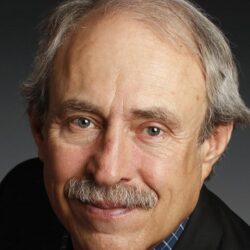Colorado is briskly decarbonizing electricity, but huge challenges remain. What is the role for a grassroots group like CRES?
by Allen Best
In Colorado’s energy transition, some work has advanced at a remarkable pace in the last 15 years. Other aspects are as perplexing now as in 2011 when Dave Bowden interviewed Matt Baker, then a Colorado public utilities commissioner, for a documentary film commemorating CRES’s accomplishments on its 15th anniversary.
Baker described a two-fold challenge. One was to achieve the legislative mandate of getting 30% of electricity from renewables while keeping the cost increase below 2%.
Check that box. In 2021, renewables provided 35% of Colorado’s electricity, according to the Energy Information Administration, even as costs of wind, solar and batteries continue to decline. And utilities now say they can achieve at least 70% by 2030 (and some aim for 100%).
With its sunny days and its windy prairies, Colorado has resources many states would envy. Plus, it’s nice to have NREL in your midst.
Clean energy technologies can and must ramp up even faster. At one time, the atmospheric pollution could be dismissed as unpleasant but worth the tradeoff. That debate has ended. The science of climate change is clear about the rising risks and unsavory outcomes of continuing this 200-year devotion to burning fossil fuels.
Big, big questions remain, though. Some are no more near resolution than they were in 2011 when Baker, who now directs the public advocates office at the California Public Utilities, identified the “desperate need to modernize the grid,” including the imperative for demand-side management.
Leave that box unchecked. Work is underway, but oh so much remains to be figured out.
For example, how much transmission do we need if we emphasize more dispersed renewable generation? Can we figure out the storage mechanisms to supplement them? Might we need fewer giant power lines from distant wind and solar farms? This debate is simmering, on the verge of boiling.
In buildings, the work is only beginning. Colorado has started, in part nudged by the host of laws adopted in 2021, among them the bill that Meillon had worked on for a decade.

John Avenson took a house with strong fundamentals, most prominently southern exposure, and tweaked it until he was confident that he could stub the natural gas line. Photo/Allen Best., Top: New Energy Colorado’s John Bringenberg showcases solar technology at the 2021 Chaffee County Tour of Green Homes near Salida. Photo/ Dave Bowden, SustainableMedia.net
Others had been working on the same issue in a different way. Consider John Avenson. Now retired, he was still working as an engineer at Bell Labs when he began retrofitting his house in Westminster to reduce its use of fossil fuels.
The house had a good foundation. It was built in the early 1980s in a program using designs created in partnership with SERI, the NREL precursor. It was part of a Passive Solar Parade of Homes in 1981. And unlike about 80% of houses in metro Denver according to the calculations of Steve Andrews, it faces south, allowing it to harvest sunshine as needed and minimizing the need for imported energy.
Avenson then tweaked and fussed over how to save energy here and then there. Finally, in 2017, he convinced himself that he no longer needed natural gas. He ordered the line stubbed.
To those who want to follow the same path, Avenson has been generous with his time. He can commonly be seen pitching in on other, mostly behind-the-scene roles, for CRES and affiliated events.
CRES’s membership is full of such individuals, people committed to taking action, whether in their own lives or in making the case why change must occur in our policies.
But what about the carbon dioxide already in the atmosphere? Can it be mopped up just a bit? Certainly, it’s better to not emit emissions. But we’re cornered now. Focus is growing on ways to return carbon from the atmosphere into the soil. Revised and rewarded agricultural practices may be one way. That will be a component of a major bill in the 2023 Colorado General Assembly climate change docket.
This is also a topic that Larson, since his time in Africa after the Reagan administration short-sheeted the solar laboratory in Golden, has avidly promoted. In 2007, the idea got a name: biochar. It is one technique for restoring carbon to soils. Today, it remains an obtuse idea to most people. It may be useful to remember that a renewables-powered economy sounded weird to many people in 1996, if they thought about it at all.
CRES has been regaining its financial health. “Through disciplined and lean operations, we have been able to slowly grow our annual income to nearly $40,000 a year,” said Eberle, the board president at a 25th anniversary celebration in October. “We have a solid financial base to not only maintain our current programs but consider new opportunities.”
The question lingers for those deeply engaged in CRES about what exactly its role can be and should be.
Always, there are opportunities for informed citizens such as those who are the lifeblood of CRES. Mike Kruger made this point clear in a CRES presentation in October 2022. As the executive director of COSSA, he routinely contacts elected officials and their staff in Washington D.C.
“The same thing happens at the State Capitol,” he said. Two or three phone calls to a state legislator has been enough to bring to their attention a particular issue or even change their vote.
And that takes us to the big, big question: What exactly has CRES achieved in its 26 years?
In this history you have read about a few salient elements:
- the shove of Xcel into accepting Colorado Green;
- the passing of Amendment 37, which raised Colorado’s profile nationally and set the stage for the election of Bill Ritter on a platform of stepped-up integration of renewables;
- the work in recent years to revamp the calculations used in evaluating alternatives to methane.

There were individuals, most notably the Rev. Martin Luther King Jr. and, in some contexts, his key lieutenants, John Lewis and Jessie Jackson.
But there were others. Consider the march from Selma to Montgomery. There were strong-willed individuals such as Amelia Boynton Robinson and, at one point in the Selma story, the school children themselves who took up the cause as their parents and other elders hesitated.
Civil rights and the energy transition have differences. The former had a deep moral component that was not yet clearly evident in energy when CRES was founded in 1996. The seriousness of climate change was not at the same level then, although arguably it is now.
Now Colorado has emerged as a national leader in this energy transition. For that, CRES deserves recognition. It’s not a singular success. CRES has had teammates in this. But it can rightfully take credit.
Other installments in this series about the history of CRES:
Part 1: A coming together of minds in Colorado.
Part 2: Why note wind?
Part 3: Why note wind?
Part 4: The path to the governor’s mansion
And also: How Bill Ritter rode wind
Part 5: Growth, a stumble, then new chapters
Part 6: Influence in the Polis years
Or download the whole series in one e-magazine of Big Pivots 64.
Why support Big Pivots?
You need and value solid climate change reporting, and also the energy & water transitions in Colorado. Because you know that strong research underlies solid journalism, and research times take.
Plus, you want to help small media, and Big Pivots is a 501(c)3 non-profit.
Big grants would be great, but they’re rare for small media. To survive, Big Pivots needs your support. Think about how big pivots occur. They start at the grassroots. That’s why you should support Big Pivots. Because Big Pivots has influence in Colorado, and Colorado matters in the national conversation.
- A big charge for Colorado’sEVnetwork - April 13, 2024
- United Power to get solar from near Pawnee - April 10, 2024
- Today’s shift to EVs and a long-ago motorcycle ride - April 10, 2024





